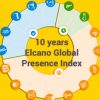Original version in Spanish: Transparencia financiera internacional.
Summary
International financial transparency is based on governments obtaining financial information on their citizens and businesses and exchanging it with other governments. The process is carried out according to rules agreed by intergovernmental institutions in order to combat illicit financial flows.
Indeed, some of the main international organisations and forums have been regulating various aspects of financial transparency for 30 years. This working paper analyses the conceptual framework and metrics of this international agenda and delves into the connections of financial transparency to other variables such as economic development, democratisation and offshore finance.
Despite the growing importance of this issue in the context of globalisation, its links to major transnational issues such as tax evasion, corruption and terrorism and its inclusion on the 2030 Agenda, there are significant disparities in the compliance of individual States with international financial transparency standards. This paper advocates clear concepts and ways of measuring transparency and illicit financial flows as a first step to improving the communication of the agenda and ultimately making it more effective.
Introduction
Financial transparency in the era of globalisation is determined by cooperation between governments and their shared concern about illicit financial flows, including tax evasion, the proceedings of corruption and organised crime, and terrorist finance. The agenda has formed gradually at summits backed by the G7 and the G20, the Organisation for Economic Co-operation and Development (OECD), the Bretton Woods institutions and various United Nations agencies, and is scattered across different international agreements. In 2015 the issue became a priority for the United Nations General Assembly, with the inclusion of a target in the Sustainable Development Goals (SDG target 16.4), alongside numerous references in the Addis Ababa Action Agenda on Financing for Development (United Nations, 2015a).
Despite its importance, there are significant disparities in countries’ compliance with international standards on financial transparency. This working paper argues that clear concepts and metrics can improve the communication of the international agenda on financial transparency and make it more effective.
The first section paper provides an overview of the history of financial transparency, from the creation of the Financial Action Task Force on Money Laundering (FATF) in 1989 through to the adoption of the SDGs in 2015. It also discusses the most influential NGOs in the area, using their discourse to identify the key concepts touched upon in this paper: illicit financial flows and international financial transparency.
The second section summarises the main measures that have facilitated analysis and debate on illicit financial flows –also produced by NGOs– and proposes new financial transparency indicators based on compliance with the 40 FATF recommendations, in line with its peer review system. The third section explores the relationships between financial transparency and other variables, such as economic development, democratisation, tax havens and offshore finance.
History and definition of financial transparency
The concept of transparency is related to accountability and the correct functioning of democracy and the rule of law and its use in political theory and practice dates back to the Enlightenment.1 Financial transparency, understood as the access to and exchange of financial information on individuals and organisations by governments, is a newer and less well established subconcept. The issue has been placed on the international agenda by a series of civil society organisations (CSOs), under the umbrella of the Financial Transparency Coalition and gradually extended by governments (Government of France, 2017), international organisations (UNODC & OECD, 2016) and the media. The term captures a series of measures fostered by international cooperation initiatives, which, despite their different origins, share a common denominator: the production and exchange of financial information between countries to reinforce the capacity of States in a wide range of policy areas, including tax and the fight against terrorism.
The origins of financial transparency: the fight against drug trafficking
The first of these initiatives arose in 1989 and marked a turning point for banking secrecy laws. The G7 summit in Paris that year adopted an economic declaration, which, in addition to analysing the global economic context and debating trade and public debt, included an entire section on drugs. It saw major world leaders commit to work together nationally and internationally to fight drug trafficking and its financial flows. Eight measures were agreed, with varying scopes and levels of implementation, the last of which involved the creation of the Financial Action Task Force (FATF) to prevent the banking system and financial institutions being used for laundering money from drugs (G7, 1989).
The task force adopted 40 recommendations on money laundering (FATF, 1990), which advocated limiting national banking secrecy laws and intensifying international cooperation on investigations, arrests and extraditions. They also set out more specific requirements for States, including creating an offence of money laundering, participation in various international cooperation instruments for drug trafficking and imposing requirements on banks to identify account holders and people making deposits, and keep records and documents that could be used for future investigations.
Throughout the 1990s, FATF successively extended its mandate until consolidating its status as a permanent institution. It also broadened its scope to cover all organised crime and extended surveillance from the banking sector to Designated Non-Financial Businesses and Professions (DNFBPs), a group that includes lawyers, notaries and advisers, as well as certain businesses classed as risky, such as those involved in cash remittances and the exchange of precious metals and stones. In geographic terms, the mechanism for extending the scope of FATF was highly original. Instead of encouraging States to sign-up and reach a global scope, it promoted the creation of similar institutions in other regions, which then joined FATF as associate members until obtaining full global coverage.2
Aitor Pérez
Senior Research Fellow, Elcano Royal Institute | @aitor_ecoper
1 The concept of political transparency dates back to the 18th century, when it was first used by authors such as Kant and Rousseau. It entered the British political tradition through Jeremy Bentham’s idea ‘the more strictly we are watched, the better we behave’ (Hood, 2006; Prat, 2006).
2 These bodies and the dates they were formed are as follows: Caribbean Financial Action Task Force (CFATF), 1992; Asia-Pacific Group on Money Laundering (APG), 1997; Moneyval, a Council of Europe body, 1997; Eastern and Southern Africa Anti-Money Laundering Group (ESAAMLG), 1999; Inter-Governmental Action Group against Money Laundering in West Africa (GIABA), 1999; Financial Action Task Force of Latin America (GAFILAT), originally formed as the Financial Action Task Force of South America (GAFISUD) in 2000; Middle East and North Africa Financial Action Task Force (MENAFATF), 2004; Eurasian Group, 2010; and the Task Force on Money Laundering in Central Africa (GABAC), 2012.



